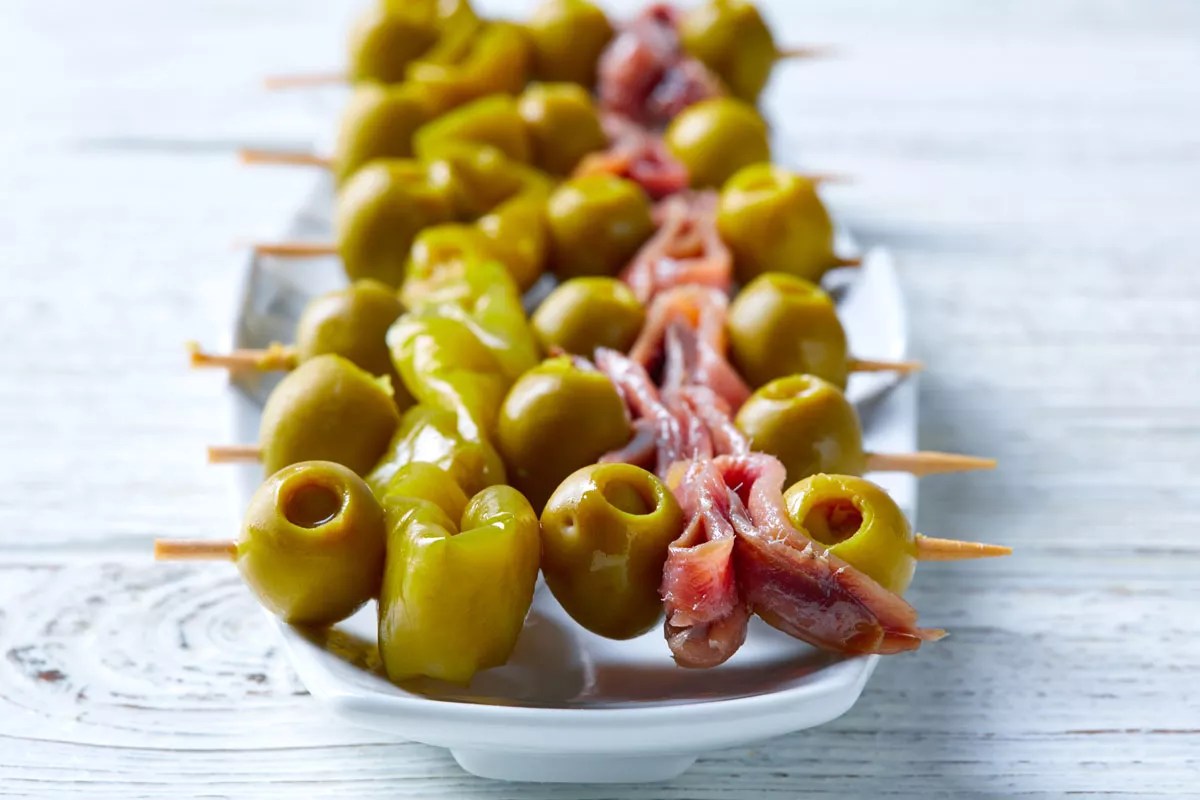Transform your next dinner party into a vibrant culinary adventure with a dazzling array of vegan tapas! Forget the usual predictable fare; this guide unveils a world of exciting flavors and textures, perfect for impressing your guests and showcasing the versatility of plant-based cuisine. From planning the perfect menu to setting the ideal ambiance, we’ll guide you through every step, ensuring a memorable and delicious evening for everyone.
We’ll delve into the creation of a diverse tapas menu, offering detailed recipes, step-by-step instructions, and helpful tips for substitutions to accommodate various dietary needs. Learn how to arrange your tapas for maximum visual impact, choose complementary drinks, and set the perfect mood with lighting, music, and decorations. Prepare to create an unforgettable vegan tapas experience that will leave your guests raving!
Presentation & Serving Suggestions

Creating a visually stunning tapas spread is key to a successful and memorable vegan dinner party. The arrangement of your dishes should be as thoughtfully crafted as the recipes themselves, aiming for a vibrant and enticing display that sparks conversation and appetite. Consider the interplay of colors, textures, and heights to create a dynamic and pleasing presentation.
A thoughtfully arranged tapas spread invites guests to explore a variety of flavors and textures. Careful consideration of color, texture, and height will elevate your presentation from a simple collection of dishes to a visually captivating feast.
Color Coordination and Texture Contrast
Imagine a platter where deep emerald green pesto bruschetta sits beside vibrant orange roasted sweet potato wedges. Next to them, a creamy white cashew cheese dip nestled in a shallow bowl provides a textural contrast to the crispy bruschetta and soft sweet potatoes. Scattering some toasted pumpkin seeds adds a pop of earthy color and contrasting crunch. This variety in color and texture creates visual interest and encourages guests to sample each item. The use of contrasting colors – such as deep reds and greens, or yellows and purples – creates a more lively and appealing display. Similarly, the interplay of smooth, creamy textures alongside crunchy or crispy elements adds depth and interest.
Height and Visual Hierarchy
To avoid a flat and monotonous presentation, vary the height of your dishes. Use small bowls, ramekins, and even small serving spoons to elevate certain tapas. For example, a tower of mini vegan empanadas placed on a small plate adds height and visual interest. A taller arrangement of marinated artichoke hearts in a glass bowl creates an elegant focal point, drawing the eye and creating a sense of depth. This layering effect prevents the display from appearing flat and encourages guests to explore different levels of the tapas arrangement. The tallest items should be strategically placed to draw the eye, creating a visual hierarchy that guides guests through the spread.
Accompanying Drinks
A selection of beverages perfectly complements the vegan tapas experience. Crisp, dry white wines, such as Sauvignon Blanc or Pinot Grigio, pair well with lighter tapas like bruschetta or marinated vegetables. A light-bodied red wine, such as a Pinot Noir, can accompany richer dishes such as mushroom empanadas or lentil stew. For a non-alcoholic option, consider a refreshing sparkling cider or a vibrant homemade sangria infused with seasonal fruits. The drinks should complement, not overpower, the subtle flavors of the vegan tapas. Consider offering a variety of options to cater to different preferences.
Serving Dishes and Tableware
The choice of serving dishes and tableware significantly impacts the overall dining experience. Small, rustic ceramic bowls and plates add warmth and charm to the setting, while sleek, modern dishes provide a more contemporary feel. Use a variety of shapes and sizes to create visual interest. Consider incorporating natural elements, such as wooden boards or slate platters, to add a touch of organic elegance. High-quality napkins and elegant cutlery complete the presentation, adding a touch of sophistication. The tableware should reflect the overall style and ambiance you wish to create for your dinner party.
Dietary Considerations & Adaptations
Creating a truly inclusive and enjoyable tapas experience requires careful consideration of various dietary needs and potential allergens. Many traditional tapas recipes rely on ingredients that can trigger allergic reactions or conflict with specific dietary restrictions. By proactively addressing these concerns, you can ensure all your guests can partake in the vibrant flavors of your vegan tapas spread.
A thoughtful approach to ingredient selection and substitution is key to creating a safe and delicious meal for everyone. This involves identifying potential allergens, offering suitable alternatives, and adapting recipes to accommodate common dietary restrictions such as gluten-free, low-sodium, or nut-free diets.
Common Allergens and Substitutions
Many vegan tapas recipes incorporate nuts, soy, and gluten. These are common allergens, and it’s crucial to offer alternatives for guests with sensitivities. For example, a vibrant Patatas Bravas recipe might traditionally use almond flour for a crispy coating. For those with nut allergies, sunflower seed flour or even a finely grated potato crust offers a similarly satisfying texture. Soy sauce, a frequent flavor enhancer, can be replaced with tamari (gluten-free) or coconut aminos for a subtly different, yet equally delicious, umami depth. Gluten-free bread or crackers are readily available for those avoiding gluten. Always clearly label dishes containing allergens and those free from them to avoid any accidental consumption.
Adapting Recipes for Specific Dietary Needs
Adapting recipes for various dietary needs is surprisingly straightforward. For gluten-free guests, replacing wheat flour with gluten-free alternatives such as almond flour, rice flour, or a blend is often sufficient. For instance, a traditional tortilla Española can be adapted by using a gluten-free flour blend in the potato mixture. Remember to always check that any pre-made ingredients, like gluten-free breadcrumbs, are certified gluten-free to avoid cross-contamination. For low-sodium diets, simply reduce or omit added salt in recipes. Many herbs and spices can enhance flavor without adding sodium. Experiment with flavorful blends of smoked paprika, cumin, and garlic powder to achieve a depth of flavor without relying heavily on salt. Consider using fresh herbs like cilantro, parsley, and dill to add freshness and complexity.
Ensuring Delicious and Safe Tapas for All
To guarantee a safe and enjoyable experience for all guests, meticulous preparation and clear communication are vital. Always thoroughly wash your hands and utensils between preparing dishes to minimize cross-contamination. Maintain separate cutting boards and preparation areas for allergen-containing ingredients and allergen-free options. Use clear labels on serving dishes to indicate the ingredients of each tapas offering, highlighting any potential allergens. Provide a detailed menu listing all ingredients to allow guests to make informed choices. If unsure about a guest’s dietary restrictions, it’s always best to ask directly and confirm any specific needs or concerns. This proactive approach demonstrates consideration and ensures everyone feels comfortable and included in the festive atmosphere.
Hosting a successful vegan tapas party is about more than just delicious food; it’s about crafting an experience. By thoughtfully considering the menu, presentation, and ambiance, you can create a truly memorable evening for your guests. Remember, the key is to embrace creativity, have fun, and savor the delicious results of your culinary efforts. So gather your ingredients, put on some music, and prepare to delight your friends and family with a spectacular vegan tapas feast!
Commonly Asked Questions
What if my guests have allergies beyond the ones mentioned?
Always confirm dietary restrictions and allergies with your guests in advance. Clearly label dishes containing potential allergens and provide alternative options where possible. If unsure about a specific ingredient, err on the side of caution and offer a substitute.
How far in advance can I prepare the tapas?
Many tapas elements can be prepped ahead of time. Prepare sauces, chop vegetables, and marinate ingredients a day or two before the party to save time on the day. Some tapas, like patatas bravas, can be partially cooked ahead and finished just before serving.
What kind of wine pairs well with vegan tapas?
Crisp white wines like Albariño or Verdejo complement lighter tapas. A medium-bodied red like Rioja or a rosé would pair well with richer dishes. Consider offering a selection to cater to different palates.
Can I make the tapas ahead and reheat them?
Some tapas reheat well, while others are best served fresh. Check individual recipes for reheating instructions. Generally, avoid reheating fried tapas as they may become soggy. Focus on making components ahead that hold up well.


